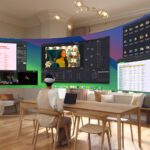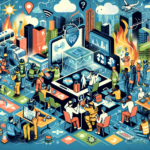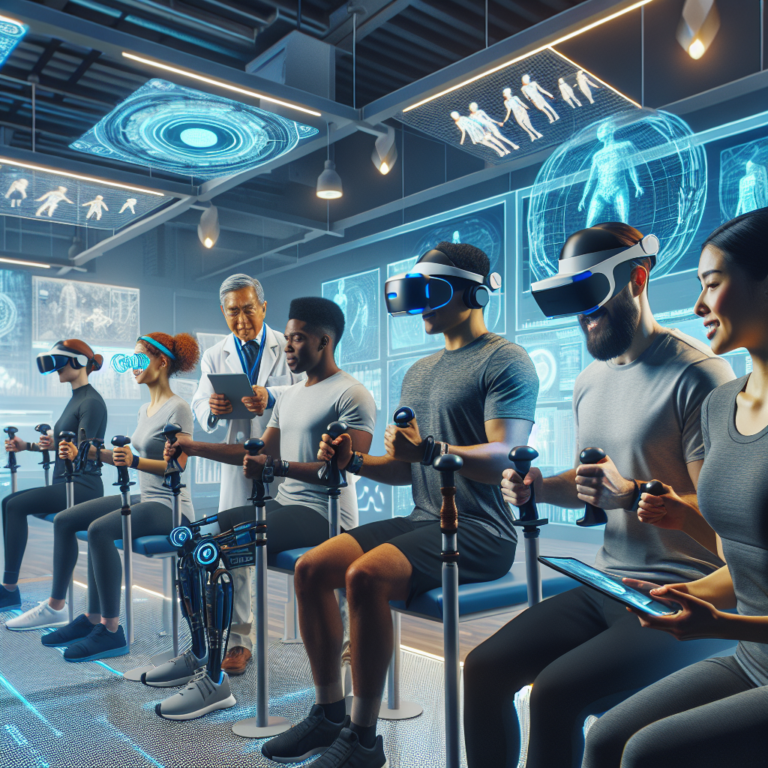Revitalizing Recovery: How XR is Transforming Healthcare Rehabilitation
The Future is Here: Understanding XR Technology in Healthcare
In recent years, we have witnessed significant advancements in technology that are reshaping various industries, and healthcare is no exception. One of the most exciting developments is the implementation of Extended Reality (XR) in rehabilitation settings. XR encompasses Virtual Reality (VR), Augmented Reality (AR), and Mixed Reality (MR), creating a spectrum of immersive experiences that can enhance patient recovery. This innovative approach is not only making therapy more engaging but also showing promising results in improving patient outcomes. 🌟
What is XR and How Does it Work in Rehabilitation?
XR technologies combine the physical and digital worlds, allowing users to interact with computer-generated environments. In healthcare rehabilitation, these experiences can be tailored to meet the specific needs of patients. Here’s a closer look at how XR works:
- Virtual Reality (VR): This technology immerses users in a completely virtual environment, providing a safe space for them to practice movements or simulations without real-world consequences.
- Augmented Reality (AR): AR overlays digital information onto the real world, allowing patients to receive guidance or feedback while they perform rehabilitation exercises in their actual surroundings.
- Mixed Reality (MR): This combines both VR and AR, allowing for real-time interactions with both virtual and physical objects, which can enhance the therapeutic experience.
The Benefits of XR in Healthcare Rehabilitation
Integrating XR into rehabilitation provides numerous benefits for both patients and healthcare professionals alike. Here are some of the most impactful advantages:
1. Enhanced Engagement and Motivation
Rehabilitation can often be a tedious process, leading to low motivation among patients. XR technologies, with their interactive and engaging environments, can make therapy sessions feel more like a game rather than a chore. This can significantly boost patients’ enthusiasm to participate in their recovery journey. 🎮
2. Personalized Therapy Programs
XR allows therapists to customize rehabilitation programs based on individual needs and progress. By tailoring exercises to fit each patient’s specific condition and goals, healthcare providers can deliver a more effective treatment plan. This personalization fosters a greater sense of ownership and accountability in patients.
3. Real-Time Feedback and Progress Tracking
With XR, patients can receive instant feedback on their performance, allowing them to make adjustments on the fly. Healthcare professionals can also monitor patients’ progress through data analytics, enhancing the treatment plan aligned with the patient’s evolving capabilities. 📈
4. Reduced Anxiety and Fear
Many patients harbor anxiety related to physical therapy, particularly following an injury or surgery. XR can simulate various scenarios where patients can practice movements safely, helping them build confidence in their abilities and decreasing feelings of fear surrounding rehabilitation.
Applications of XR in Various Rehabilitation Scenarios
The versatility of XR technology opens doors to various rehabilitation applications. Here are some areas where XR has shown remarkable promise:
1. Neurological Rehabilitation
Patients recovering from strokes or traumatic brain injuries often face challenges in movement and cognitive abilities. XR can provide tailored exercise programs that focus on specific motor skills and cognition, allowing patients to practice regularly in a controlled, engaging environment.
2. Orthopedic Rehabilitation
Whether recovering from a knee replacement or shoulder surgery, patients can use XR to enhance their physical therapy routines. Virtual simulations can help them safely practice exercises while being guided on the correct techniques to avoid further injury. 🦴
3. Pediatric Rehabilitation
Kids often respond better to playful experiences than traditional therapy methods. Utilizing XR can turn rehabilitation exercises into fun adventures, encouraging young patients to actively participate and complete their therapy routines with enthusiasm.
4. Geriatric Rehabilitation
Older adults, who may experience mobility and cognitive challenges, can benefit significantly from XR technologies. Tailored programs that focus on balance, strength, and memory can promote independence and enhance the quality of life for elderly patients.
Challenges and Considerations for Implementing XR in Rehabilitation
While the prospects of XR in healthcare rehabilitation are exciting, it’s important to acknowledge some challenges in its implementation:
- Cost and Accessibility: The initial investment for XR technology can be high, which might limit access for some facilities, especially smaller practices or in rural areas.
- Training for Healthcare Providers: Professionals need proper training to effectively implement XR in their rehabilitation programs. Ongoing education and support will be vital for success.
- Patient Reluctance: Some patients may be hesitant to engage with new technology. It is essential for healthcare providers to educate and reassure patients about the benefits of XR for their recovery.
The Path Ahead: Preparing for the Integration of XR in Healthcare Rehabilitation
The transformation that XR technology can bring to healthcare rehabilitation is profound. As we move forward, embracing XR will require a collaborative effort from healthcare providers, technology developers, and patients alike. By harnessing the power of XR, we can pave the way for a new era of patient-centered care that enhances recovery and overall well-being.
In a world where technology is continuously evolving, it’s exhilarating to see how XR is becoming a beacon of hope for those seeking recovery from injuries and ailments. Imagine a future where every rehabilitation session is an exciting journey towards recovery! The possibilities are truly endless. 🌈




0 Comments